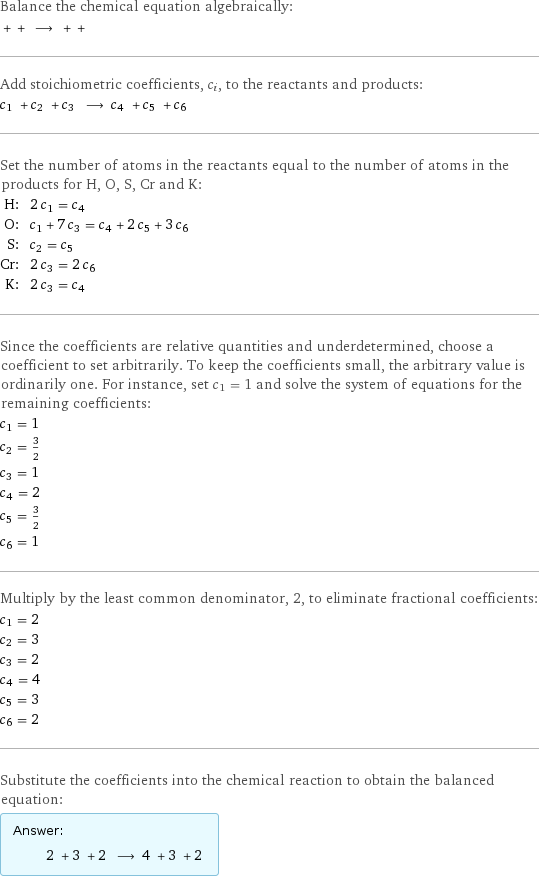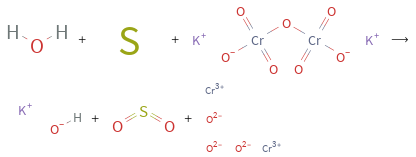Input interpretation

water + mixed sulfur + potassium dichromate ⟶ potassium hydroxide + sulfur dioxide + chromium(III) oxide
Balanced equation

Balance the chemical equation algebraically: + + ⟶ + + Add stoichiometric coefficients, c_i, to the reactants and products: c_1 + c_2 + c_3 ⟶ c_4 + c_5 + c_6 Set the number of atoms in the reactants equal to the number of atoms in the products for H, O, S, Cr and K: H: | 2 c_1 = c_4 O: | c_1 + 7 c_3 = c_4 + 2 c_5 + 3 c_6 S: | c_2 = c_5 Cr: | 2 c_3 = 2 c_6 K: | 2 c_3 = c_4 Since the coefficients are relative quantities and underdetermined, choose a coefficient to set arbitrarily. To keep the coefficients small, the arbitrary value is ordinarily one. For instance, set c_1 = 1 and solve the system of equations for the remaining coefficients: c_1 = 1 c_2 = 3/2 c_3 = 1 c_4 = 2 c_5 = 3/2 c_6 = 1 Multiply by the least common denominator, 2, to eliminate fractional coefficients: c_1 = 2 c_2 = 3 c_3 = 2 c_4 = 4 c_5 = 3 c_6 = 2 Substitute the coefficients into the chemical reaction to obtain the balanced equation: Answer: | | 2 + 3 + 2 ⟶ 4 + 3 + 2
Structures

+ + ⟶ + +
Names

water + mixed sulfur + potassium dichromate ⟶ potassium hydroxide + sulfur dioxide + chromium(III) oxide
Chemical names and formulas

| water | mixed sulfur | potassium dichromate | potassium hydroxide | sulfur dioxide | chromium(III) oxide Hill formula | H_2O | S | Cr_2K_2O_7 | HKO | O_2S | Cr_2O_3 name | water | mixed sulfur | potassium dichromate | potassium hydroxide | sulfur dioxide | chromium(III) oxide IUPAC name | water | sulfur | dipotassium oxido-(oxido-dioxochromio)oxy-dioxochromium | potassium hydroxide | sulfur dioxide |